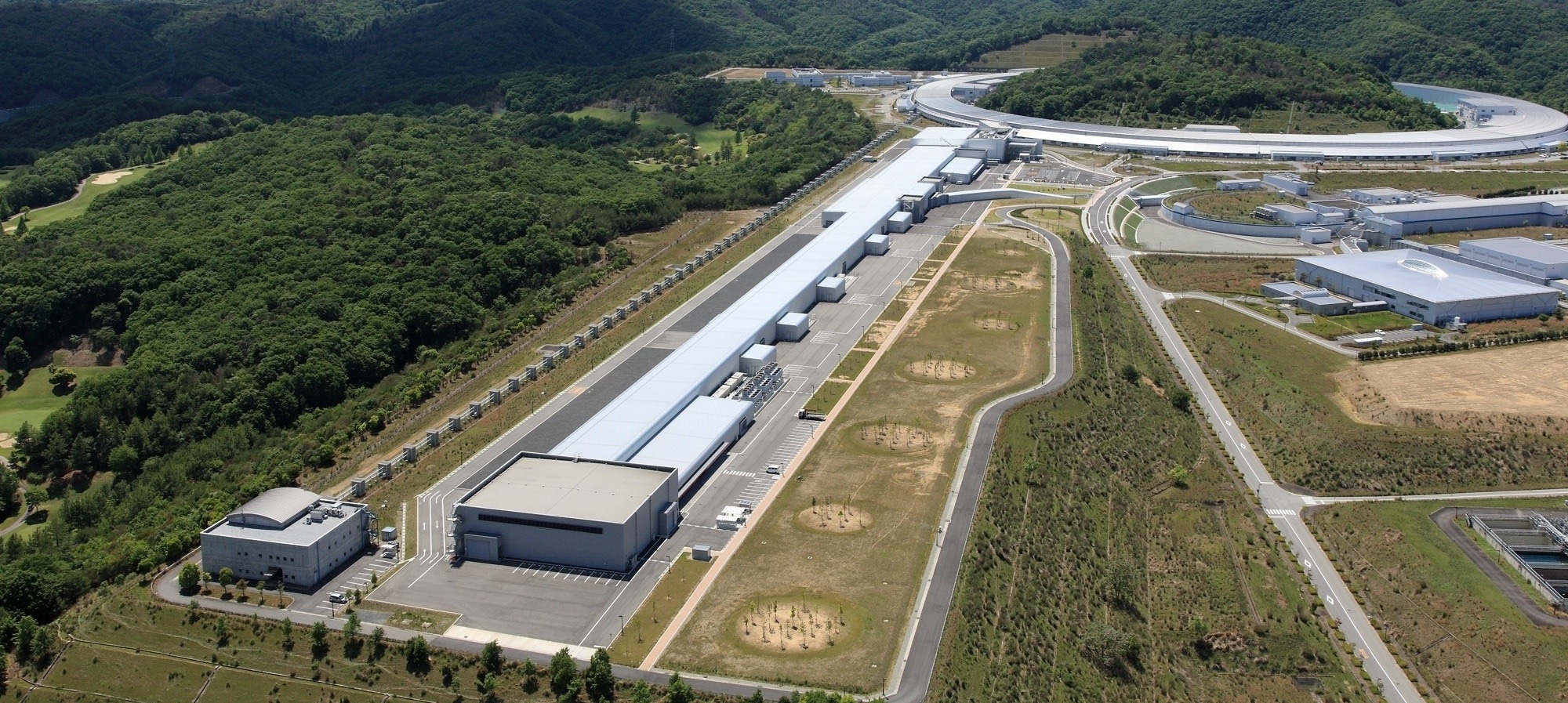It is generally assumed that when something is illuminated, the brightness of the image produced will increase with the brightness of the source. This law also applies to ultra-short laser light pulses, but only to a limited power. In addition to providing a unique viewpoint for the generation of laser pulses with substantially shorter pulse durations than those currently in use, the answer to the question of why an X-Ray diffraction image ‘darkens’ at extremely high X-Ray intensities advances the basic understanding of the light-matter interaction.
 The SACLA free-electron laser facility, where the experiment on the diffraction of ultra-short X-Ray pulses on crystalline silicon samples was carried out. Image Credit: SACLA
The SACLA free-electron laser facility, where the experiment on the diffraction of ultra-short X-Ray pulses on crystalline silicon samples was carried out. Image Credit: SACLA
Will it be brighter if there is more light? If this observation were not always true, it could seem insignificant! When ultrafast laser pulses of X-Ray light are used to illuminate silicon crystals, the diffraction images that follow are initially brighter the more photons that fall on the sample or the greater the beam intensity.
However, a surprising result has recently been noted: the diffraction images abruptly degrade when the X-Ray beam’s intensity begins to surpass a particular critical threshold.
This perplexing phenomenon was recently explained by experimental and theoretical physicists from Japanese, Polish, and German research institutions, such as the RIKEN SPring-8 Centre in Hyogo, the Institute of Nuclear Physics of the Polish Academy of Sciences (IFJ PAN) in Cracow, and the Center for Free-Electron Laser Science (CFEL) at the DESY laboratory in Hamburg.
X-Ray free-electron lasers (XFELs) produce extremely bright X-Ray pulses of femtosecond durations or quadrillionths of a second. These machines, which are presently only found in a few sites throughout the world, are used to analyze the structure of materials via X-Ray diffraction, among other things.
An X-Ray pulse is used to light a sample, and the diffracted radiation is recorded. The diffraction picture acquired is then utilized to rebuild the original crystal structure of the substance under investigation.
Intuition tells us that the more photons we have, the clearer the diffraction image of the sample should be. This is indeed the case, but only up to a certain X-Ray intensity, of the order of tens trillions of watts per square centimeter. When this value is exceeded—and we have been only recently capable of doing this—the diffraction signal suddenly starts to weaken. Our research is the first attempt to explain this unexpected effect.
Beata Ziaja-Motyka, Professor, The Institute of Nuclear Physics Polish Academy of Sciences
Professor Ziaja-Motyka works on computer simulations and theoretical modeling of processes pertaining to the interaction of ultrafast X-Ray pulses with matter.
Computer simulations have been used to support theoretical studies aimed at explaining the outcomes of the experiment using XFEL laser firing on crystalline silicon samples at Japan’s XFEL facility, called SACLA, Hyogo. The investigation by the researchers produced the following explanation for the occurrence they saw.
When an avalanche of high-energy photons hits a material, there is a massive knockout of electrons from various atomic shells, resulting in a rapid ionization of atoms in the material. Last year, our group showed that the first movements of ionized atoms in the crystal lattice, initiating the process of structural self-destruction of the sample, occurred with a delay of approximately 20 femtoseconds after the light pulse hit the sample. We are now convinced that the reason for the recently observed weakening of the diffraction signal is due to phenomena occurring earlier, in the first six femtoseconds of the interaction.
Dr. Ichiro Inoue, Research Scientist, SPring-8 Centre, RIKEN
In the early stages of X-Ray-matter interaction, arriving high-energy photons quickly excite the electrons in atoms’ “surface” (valence) shells in addition to those in deep atomic shells near the nucleus. It turns out that atoms with deep shell holes have significantly smaller atomic scattering factors—that is, the variables that control the diffraction signal’s strength.
Prof. Ziaja-Motyka added, “Our research shows that before any structural damage to the material occurs and the sample disintegrates, first a rapid electronic damage occurs. As a result, the final part of the pulse practically no longer ionizes the material, because further excitation of electrons by X-Ray photons is no longer energetically possible.”
Upon initial observation, the impact seems to be simply unfavorable as it causes the recorded diffraction pictures to become less brilliant. Still, it appears that this discovery could be easily abused. Reconstructing complicated atomic structures in three dimensions from recorded diffraction images can be made more precise by taking into account the fact that different atoms react differently to ultrafast X-Ray pulses.
The generation of ultra-short pulse duration laser pulses is another possible application area. Since the high-intensity X-Ray pulse ‘cuts off’ a major portion of the already ultra-short pulse, the material could be intentionally utilized as ‘scissors’ to produce effectively shorter pulses than those obtained thus far. If successful, this could give rise to yet another quantum world imaging breakthrough.
The Institute of Nuclear Physics of the Polish Academy of Sciences provided co-financing for this work.
Journal Reference:
Inoue, I., et al. (2023) Femtosecond Reduction of Atomic Scattering Factors Triggered by Intense X-Ray Pulse. Nature Nanotechnology. doi:10.1103/PhysRevLett.131.163201